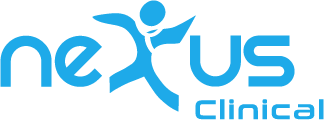
According to a Health Information National Trends Survey, one in every three Americans uses a wearable device, such as a smartwatch or band, to track their health and fitness.
Data shows that wearable technology is gaining rapid adoption in healthcare. In earlier times, traditional healthcare systems depended entirely on the patient as to how he or she could present his or her health symptoms to doctors during appointments, which ultimately led to incomplete and inaccurate data collection.
Wearable technology has changed the whole game; now, patients do not need to remember their health-related symptoms, and all the work is done with wearables.
Yes, wearables significantly impact healthcare providers and electronic health records (EHR). With their help, real-time data can be generated, patient care can be more convenient and accessible, chronic disease management can be done well, and disease can be detected in a timely manner.
But what about security concerns? The security of patient data.
In this blog, we will explore how wearable devices are impacting healthcare providers and EHR systems and what EHR systems are available in the market that keep patient data secure under HIPAA compliance.
Different Types of Wearables and Their Functionalities
- Smartwatches: They help track heart rate and monitor sleep patterns and physical activities of individuals.
- Smart patches: These patches help monitor the glucose levels of the patient and deliver medication.
- Fitness trackers: It is a very useful thing; it help Measure an individual’s steps, check how many calories were burned during physical activities, and monitor other fitness metrics
- Wearable ECG monitors: These help detect heart arrhythmias and track other cardiac issues of the patient.
Benefits of Wearables for Patients:
These wearables help patients in several ways:
- Self Monitoring: Wearables help individuals/ patients in keeping control of their health by providing real-time health related data such as their physical activities, heart rate, and sleep patterns. This constant data inspires the patient to adopt a healthy lifestyle and also keeps them aware of their health status.
- Chronic disease management: Wearables are very helpful for those patients who have chronic diseases such as diabetes, hypertension, and heart-related diseases. Using wearables it is possible for them to continuously monitor their health status so that their condition can be managed in a better manner. For example, a smart patch that monitors glucose levels can alert a diabetic patient to high blood sugar levels, prompting timely intervention.
- Preventive healthcare: There was a time when, until the patient did not have a routine check-up, he did not know what disease he was suffering from, and due to not getting timely treatment, the disease used to worsen. Wearables detect body irregularities in a timely manner so that the patient can get timely treatment.
Benefits of Wearables for Healthcare Providers:
- Richer patient data: Wearables share complete patient data every day with healthcare providers so that complete information about the patient’s health conditions is available simultaneously. From this data, the patterns and trends of the patient’s health conditions can be known, which helps diagnose the disease.
- Improved remote monitoring: Wearables make remote monitoring very easy for healthcare providers. For patients who live in remote areas and cannot make frequent in-person visits, healthcare providers can easily conduct their check-ups remotely with the help of wearables.
- Earlier intervention: Wearables help healthcare providers learn about a disease quickly so that it can be diagnosed before the disease turns serious.
Wearables and EHR: Integration Challenges and Solutions
Challenges of EHR Integration:
- Data format standardization: Wearable devices generate data in different formats, which makes data integration a very complicated and time-consuming process. Each wearable device manufacturer uses different formats to record patient health data, making consolidating information into a single EHR system a difficult task.
- Secure transmission: When patient data is transmitted from a wearable device to EHR systems, it is not easy to maintain the security of that data, and there are always chances of data leakage somewhere. This requires a focus on data encryption and also ensuring that only authorized personnel can access the patient’s data.
Potential Solutions:
- Open APIs and standardized data formats (HL7): Open APIs (Application Programming Interfaces) and standardized data formats like HL7 (Health Level Seven) can make integration easier by making sure that wearables and EHR systems can work together and safely share the patient’s confidential data. These guidelines make it possible for systems to communicate with each other properly, which means that data from wearables can be quickly added to EHRs.
Industry Efforts: How is the Nexus Clinical EHR System Already One Step Ahead?
Ensuring the security of patient data must be a top priority, which is why governments have made regulations and best practices to improve individual data protection in healthcare wearables.
For example, the United States’ Health Insurance Portability and Accountability Act (HIPAA) and Europe’s General Data Protection Regulation (GDPR) both establish strict standards for the protection and privacy of personal information. Organizations that deal with patient data must ensure they comply with these requirements.
The best solution in the market right now is the Nexus Clinical EHR system. Nexus Clinical is dedicated to providing a platform that is trustworthy, safe, and HIPAA compliant.
This guarantees the utmost security for all patient data collected via wearables and linked to the EHR system. Healthcare practitioners and patients alike may rest easy knowing that Nexus Clinical EHR system is secure because of its superior encryption, strong access restrictions, conformity with industry laws, and MIPS/MACRA readiness.
Thoughts
So, yes, wearables are transforming the field of healthcare by offering uninterrupted, up-to-date patient data that improves the quality of patient care and boosts overall health results.
There are many benefits for both patients and healthcare providers, but the challenges of integrating wearables with EHR systems that ensure data privacy still persist.
But,
If you’re a healthcare provider in need of a trustworthy and secure EHR solution, Nexus Clinical offers a HIPAA-compliant platform that prioritizes data protection along with smooth integration of your patients’ data.
Contact us today to boost your practice with a secure and one of the world’s best EHR solutions from Nexus Clinical.





